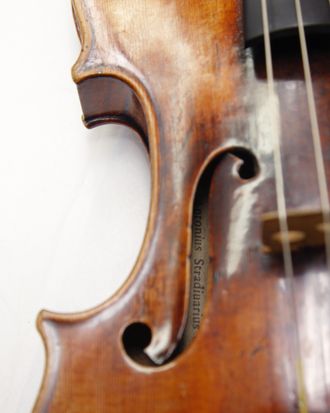A Stradivarius violin is pictured at the restoration and research laboratory of the Musee de la Musique in Paris, on December 3, 2009. For centuries, historians of music, instrument makers and chemists have been trying to decipher how Antonio Stradivari, working in the small Italian town of Cremona three centuries ago, was able to make violins whose acoustic qualities have never been surpassed. According to a French-German study published on December 4, 2009, on five violins stored at the Musee de la Musique (Cité de la Musique), the varnish applied on the violins had red pigments added. AFP PHOTO PATRICK KOVARIK (Photo credit should read PATRICK KOVARIK/AFP/Getty Images)
Photo: PATRICK KOVARIK/2009 AFP
Last May, Bernard Greenhouse, a renowned cellist, died in his Cape Cod home, leaving behind one of the most prized instruments in the world: one of the last surviving Stradivarius cellos, the Countess of Stainlein (1707). Bids for the 300-year-old cello, which had been with Greenhouse for 54 years, are to be unsealed this week and will likely offer sums in the seven to eight figures. Only twenty of Antonio Stradivari’s prime cellos remain in existence — the Countess of Stainlein being the oldest one.





